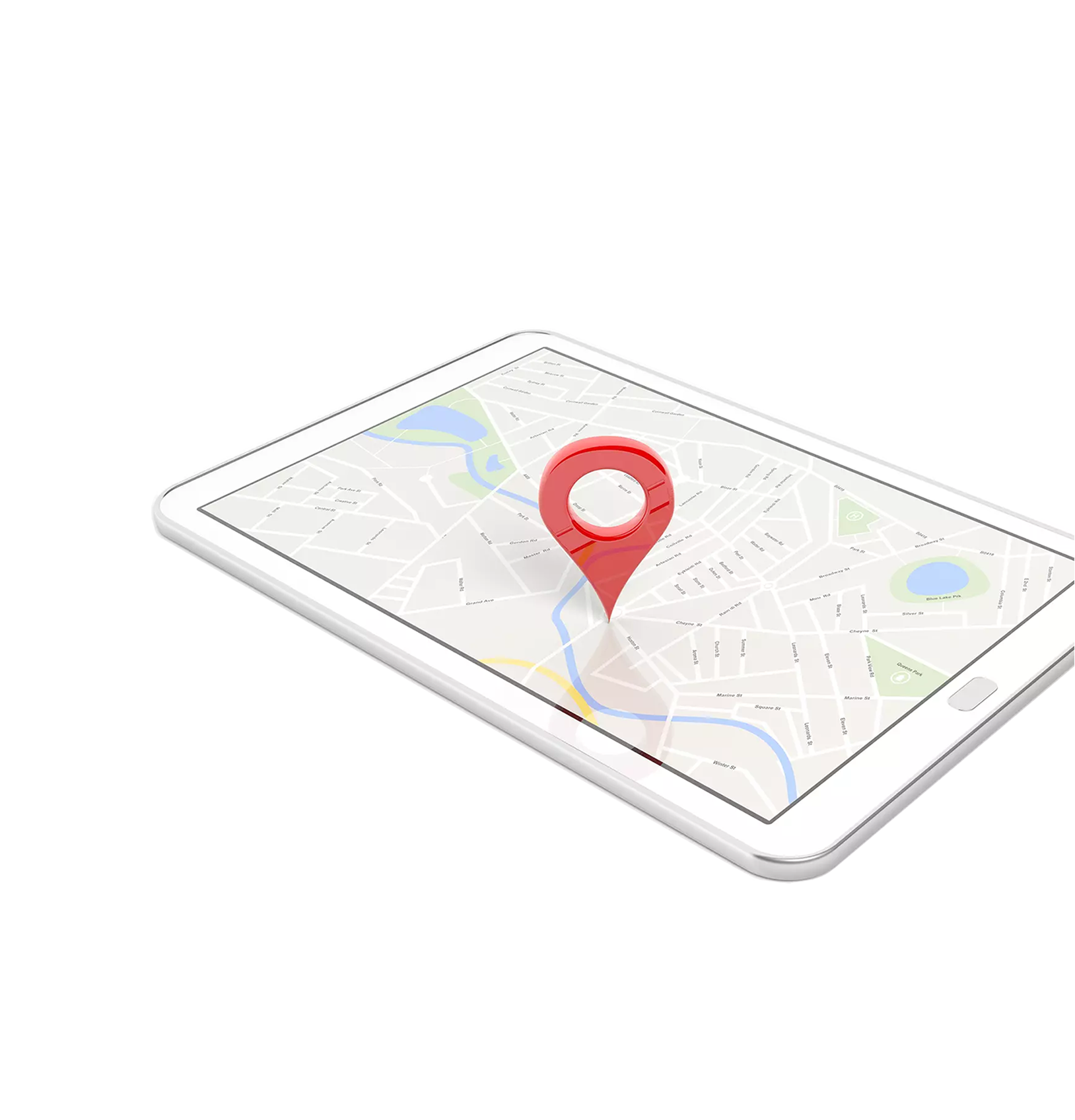The Costs of Doing Nothing: How Automated Route Planning Keeps Costs Down and Profitability High
The Costs of Doing Nothing: How Automated Route Planning Keeps Costs Down and Profitability High
The Costs of Doing Nothing: How Automated Route Planning Keeps Costs Down and Profitability High
Oct 15, 2025
 John McCurdy | Senior Content Writer, Marketing
John McCurdy | Senior Content Writer, MarketingIn a Hurry? Here’s a Quick Summary:
Expenses Erode Profits: Inefficient routes waste fuel, time and vehicle capacity, while route optimization software reduces miles, cuts costs and keeps fleets running lean.
Manual Planning Is Time-Consuming: By automating route planning, you can free your planners to focus on strategic initiatives that drive business growth rather than consuming their time with manual tasks.
Inconsistent Schedules Hurt Driver Satisfaction: Unfair or unrealistic schedules, which often result from manual plans, frustrate drivers and increase turnover. Automated planning ensures equitable assignments and supports long-term retention.
Poor Delivery Experiences Disappoint Customers: Optimized routing delivers reliable, personalized service with proactive updates, helping to prevent missed deliveries and ignored requirements so that customer experiences don't suffer.
Staying Old-School Limits Growth: Sticking with manual methods limits insights and growth opportunities, whereas advanced route planning solutions enable scenario modeling, KPI tracking and competitive advantage.

American author and teacher Dale Carnegie said, “Inaction breeds doubt and fear. Action breeds confidence and courage." It’s a powerful quote that speaks to the dangers of hesitation and the power of executing a well-thought-out plan, especially in times of uncertainty or crisis.
It likely resonates with a transportation operations leader like you, because you know well that tough competition and trends like rising fuel costs make proactive improvement imperative. And it should be a wake-up call if you’ve been delaying the decision to implement an automated route planning system—because you'll end up paying in both money and your business’s future if you stick with manual methods.
This is the second in our series of blog posts covering the “costs of doing nothing” when it comes to inefficient and outdated logistics processes. Here, we’ll be discussing how manual route planning—that is, by hand, with or without the aid of maps, spreadsheets or basic digital tools—can hold your business back from better results.
The solution is route planning software that automatically creates optimized routes, a system that’s not only for logistics providers but also manufacturers, distributors and retailers of all kinds and sizes that have a fleet out on the road. Benefits like lower costs, better driver retention and increased scalability could be the difference between your company lagging at the back or leading the pack.
So, with no further ado, let’s jump into the costs of sticking with manual route planning rather than implementing such a system.
Your Cost: Extra Expenses Erode Your Profits
Running a fleet efficiently is more than just keeping vehicles moving—keeping costs under control is also critical. Manual routing often leads to plans that are not optimized for cost—it's simply too much to ask of any planner, no matter how skilled, to account for every variable, every time. That means drivers will have to travel extra miles and/or circle back to depots more than needed, and each additional mile means more fuel consumed, accelerated wear and tear and higher maintenance costs, all of which slowly eat away at your profits.
But manual route planning doesn’t just hit the bottom line in obvious ways. They can create hidden expenses, too. Inefficient routing often necessitates overtime, especially if schedules are tight and delivery windows are fixed. And following manually created routes doesn’t only keep drivers on the road longer—planners' inability to account for many complex factors at once also increases the likelihood of fines or other regulatory penalties, from traffic violations to missed hours-of-service compliance, potentially adding up to thousands of dollars.
Even beyond fuel, maintenance and fines, poorly planned routes can compromise asset utilization. Trucks sit idle waiting for drivers to finish rounds, deliveries are delayed, drivers aren’t utilized optimally, and vehicle capacity isn’t used to its fullest. That means your fleet doesn't get as much done as it could, so your company gets less bang for your buck. Over time, that compounds, creating a significant drag on profitability and limiting financial flexibility.
The Automated Route Planning Difference: Quick Creation of Optimal Routes Keeps Costs in Check
Automated route planning changes the equation entirely. Route optimization software analyzes your fleet resources, stops, delivery time windows and customer requirements, then uses an advanced algorithm to generate the most efficient routes possible. Routes that once took hours to map by hand can now be created in minutes, with the system accounting for complex factors (like sequencing and regulations) that are tough to manage manually. Advanced systems even offer routing assistants powered by artificial intelligence (AI) that suggest improvements and learn from planners’ manual changes based on real-world knowledge.
With your drivers following these optimized routes, your business reduces mileage, decreases fuel consumption, avoids unnecessary overtime and lowers the risk of fines. Every asset—from trucks and depots to drivers and planners—is used efficiently, keeping your operations lean and profitable. The result is a tangible reduction in avoidable expenses and a direct boost to your bottom line, all without requiring extra effort from your team.
Your Cost: Manual Route Creation Consumes Your Planners’ Time
Your route planners are some of your most valuable team members, but when they’re forced to handle routing by hand, much of their expertise goes untapped. Hours can be lost dragging pins across a digital map, checking traffic data and juggling spreadsheets to make sure deliveries line up with customer expectations. This manual work is repetitive, draining, and leaves little space for the creative and strategic thinking planners could bring to your business.
The time spent on manual route planning also slows decision-making across your organization. If it takes hours each day to create delivery plans, your business has less flexibility to respond to last-minute orders, changing customer needs and unexpected disruptions. And by the time the routes are finally set, opportunities (to rectify errors, or capitalize on emergent demand) are gone, along with valuable hours of the day.
Ultimately, when planners are tied up with tedious daily tasks, your company misses out on their higher-level contributions. Instead of analyzing performance to find new ways to increase efficiency and service quality, they’re stuck in an endless cycle of daily scheduling. That leads to lower job satisfaction and staff retention, and it hampers your business's ability to achieve better results and grow.
The Automated Route Planning Difference: Your Teams Get Time Back for Strategic Initiatives
The best way to relieve your employees of the burden of manual planning is to automate the process with a purpose-built system. The best route planning software generates optimal routes in moments, incorporating all necessary variables like delivery time windows, traffic conditions and vehicle capacities. What once consumed hours every day now happens automatically, with greater accuracy than a human could manage.
Freed from the tedium of creating routes from scratch themselves, your planners can shift their focus to the work that really drives growth—improving service levels, collaborating with other departments or modeling different delivery scenarios to discover opportunities for improvement. Instead of being bogged down by the day-to-day, they become strategic contributors who help your business scale and thrive.
Your Cost: Inconsistent Schedules Hurt Driver Satisfaction and Retention
When routes are created manually, driver schedules can get messy. A planner juggling dozens of variables may inadvertently assign a driver a route that is overly long, packed with too many stops or scheduled without enough buffer for traffic. This can create a perception of unfairness: Some drivers feel overworked while others end up underutilized. That imbalance is a quick way to erode morale across your fleet.
Manual planning also makes it harder to respect the individual needs and circumstances of drivers. Personal preferences, vacation schedules and/or certification requirements can easily get overlooked when plans are assembled by hand. Even well-intentioned or highly experienced planners don’t always have the bandwidth to take every detail into account. Unfortunately, that can frustrate your drivers and diminish their loyalty to your company.
And it's not just company culture that suffers, but your finances as well. Dissatisfied drivers are far more likely to leave, and with ongoing shortages across the industry, replacing them is costly and time-consuming. High turnover adds recruitment and training expenses, while gaps in coverage strain the rest of the team. Thus, inconsistent schedules don’t just affect driver happiness, they directly threaten your company’s profitability too.
The Automated Route Planning Difference: Fair and Balanced Schedules Keep Drivers Happy
With an automated system handling route creation, fairness becomes the rule rather than the exception. Advanced route optimization systems with resource management functionality account for availability, rest requirements, certifications, holidays and even driver preferences, ensuring schedules are realistic and respectful of individual needs. Every driver is treated equitably, and compliance with hours-of-service regulations is built into the plan from the start.
Reliably fair schedules build trust between drivers and your business. When employees know they’ll get manageable routes, predictable hours and consideration for their needs, they’re more likely to stay engaged and committed. Happier, more stable teams lead to better performance on the road, lower turnover costs and stronger long-term relationships between drivers and your organization.
Your Cost: Delivery Experiences Fail To Meet Customer Expectations
When promised delivery times aren’t met or special instructions are ignored, customers notice—and it can quickly erode trust. Manually planned routes leave your delivery performance vulnerable to these problems. Balancing multiple routes by hand often creates overly tight schedules with insufficient time between stops, leading to missed delivery windows and disappointed customers.
Manual planning also makes it difficult to consistently accommodate unique customer requirements. Certain deliveries may need specific vehicle types, specialized handling or drivers with the right certifications. Without an automated system to track and enforce these requirements, requests can be overlooked, dragging down customer service.
The cumulative effect is a service level that is inconsistent and unreliable. Customers will “vote with their dollars” by choosing another provider when promised delivery times aren’t met or when special instructions are ignored. Poor experiences can erode trust, damage long-term relationships and ultimately impact your company’s reputation and revenue.
The Automated Route Planning Difference: On-Time Tailored Deliveries Delight Customers
Tailoring deliveries to individual customers' needs is much more manageable with route planning software that can account for those constraints and improve customer service while still ensuring efficiency. By factoring in time windows, vehicle requirements and any special handling instructions, the system generates optimized routes aligned with both operational capacity and customer expectations.
Additionally, many automated solutions enable proactive communication with customers. Automated delivery notifications and real-time updates keep customers informed every step of the way, reducing uncertainty and improving satisfaction. The combination of reliable timing, personalized service and proactive communication helps build stronger relationships and reinforces your company’s reputation for dependable delivery.
Your Cost: Staying Old-School Limits Scalability and Growth
Your business stays stuck in reactive mode when route planning is done manually, as the focus is on making it through the short term, not long-term growth. There’s no time to analyze the true cost of serving each customer, evaluate the impact of adding new clients or investigate declines in service levels—and without these insights, you won’t have the confidence you need to make improvements or expand into new areas.
Manual planning also restricts your ability to experiment strategically. Questions like “What if we opened a new depot?” or “What if we added more trucks?” are hard to answer without spending hours running calculations and trying to anticipate every variable. The result is missed opportunities to improve results and get an edge over competitors (especially if they’re already using data-driven planning tools).
Finally, staying old-school can limit your visibility into key performance indicators (KPIs). Without reliable, centralized data, it’s challenging to track on-time delivery rates, vehicle utilization, exception trends or driver performance. That makes it harder to identify areas that require attention and measure the impact of operational changes, meaning you're flying at least partially blind.
The Automated Route Planning Difference: Advanced Solutions Grant a Competitive Advantage
The reporting and KPI tracking capabilities built into route optimization solutions provide a clear, accurate picture of operational performance. With reliable data on everything from route efficiency to driver performance, you can make smarter, faster decisions, identify areas for improvement and maintain a competitive advantage.
What's more, strategic route planning functionalities—a hallmark of the best route planning software—let you run unlimited “what-if” scenarios. That enables you to test changes to depots, fleet size, customer assignments and more before committing any resources so that you imagine the results. That empowers you to grow your company strategically, optimize resources and continuously improve service.
Aptean Routing & Scheduling Software: Time To Take the Wheel
If you’re feeling a greater sense of urgency to deploy an automated route planning system for your business, that’s good. The benefits are substantial, so you’ll get a full return on investment (ROI), and now is the right time to accelerate improvement and beef up your bottom line with route optimization software—but make sure you choose wisely, not every solution delivers on all of the above.
But we can say with certainty that Aptean Routing & Scheduling Paragon Edition does. It’s the latest generation of one of the most trusted systems on the market, continuing Paragon’s legacy. With it, you can plan optimized routes with just a few clicks, model scenarios to inform decisions, save up to 30% on fleet costs, leverage powerful AI capabilities and more.
What’s more, we’ll be your guide through implementation to ensure that the system is configured properly and are always available to answer your route planning software questions. Plus, it’s cloud-native software, and it seamlessly integrates with both our transportation management system (TMS) and electronic proof of delivery (ePOD) solution so that you can have a fully connected technology stack.
Speaking of getting connected, we saved the best for last. Aptean’s advanced route planning software is now available on AppCentral, our all-in-one business software platform powered by AI that streamlines end-to-end operations. This exciting new offering unifies all your Aptean solutions via a shared datalake, automates manual processes with the help of AI agents and empowers team members with Personalized Workspaces that put all the tools they need at their fingertips.
And that’s only the beginning. You can get instant answers to natural language questions to inform critical decisions with AppCentral’s GenAI Query feature and prepare for the future with Intelligent Predictions. That’s the sort of pioneering functionality you get with Aptean, where we’re always driving innovation and raising the bar in enterprise solutions.
Ready to hit the road and start your journey? Take the free product tour, schedule your personalized demo or contact us for more information.
Unlock the Value of Your Logistics Operation With Aptean TMS Solutions
Book a demo at a time that suits you and discover how you can run a leaner logistics operation—with fewer surprises and more control.



